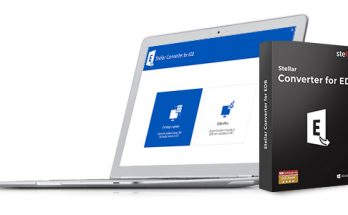If you’re dealing with a lot of files everyday, chances are that your file system is messed up: poorly named files in your collection can waste a lot of your time finding the right file.
Confusing file names can affect your overall productivity. To deal with this issue, you might want to rename your files.
Benefits of Renaming your Files & Adding Prefix
There are multiple benefits of renaming your files:
- Makes it easy to organize your files
- Files become accessible in few clicks
- Search results are not cluttered with too many unwanted entries
- As there is no confusion with file names, you don’t spend time working on the same file again
- Setting logical names to your files help you distinguish them from other files
Using Command Prompt
Command Prompt is the default command-line interpreter in Windows. You can use Command Prompt to automatically rename multiple file prefixes. To rename your files, you need to first set the active directory and then execute the main query.
- Type Command Prompt in the Search Box on your Taskbar.
- Open Command Prompt from the search results.
- Set the active directory to the folder that contains the files you want to rename:
- cd <your directory>
- Type the following command to rename your files:
- for %a in (*.*) do ren "%a" "prefix - %a"
Using Windows PowerShell
Windows PowerShell is an interactive command-line shell primarily used by system administrators and IT professionals. PowerShell supports batch renaming of your files and adding prefix. Here’s how:
- Type Windows PowerShell in the Search Box on your Taskbar.
- Open Windows PowerShell from the search results.
- Set the active location to the path that contains your files:
- cd <your directory>
- To rename your files:
- dir | Rename-Item -NewName {$_.Directory.Name + " - " + $_.Name}
Using File Explorer
File Explorer was earlier known as Windows Explorer. We use it almost everyday to browse through our files and folders. With a few handy tricks, we’ll use the File Explorer to rename multiple files in our collection and get rid of disorganization.
- Open File Explorer.
- Go to the folder that contains your files.
- Select the files you want to rename.
- Press F2 key.
- Type a new name for your files and then press Enter.
Using Easy File Renamer
Easy File Renamer is powered with multiple renaming patterns to make the task simple and easy. With just a few steps, you can select the files to rename, your renaming pattern and proceed.
Easy File Renamer lets you batch move or batch copy files without errors. Smoothly copy and move large files without encountering any error. You can also rename music tags using the music tag fixer feature.
With your purchase of Easy File Renamer, you get a complimentary subscription to Cloud File Renamer. Using CFR, you can rename files stored on different cloud platforms such as Amazon S3, Google Drive, Dropbox and OneDrive.
Steps
- Download Easy File Renamer.
- Click on the System Renamer tab.
- Click on Add Files and select the files you want to add for renaming.
- Select your desired renaming rule from the left-side panel
- Insert text
- Remove or replace text
- Change the text case
- Add prefix
- Add postfix
- Add numbering
- Click on Add Rule.
- You can apply multiple renaming patterns at once.
- Click on Rename.
Conclusion
That's it, at least for now: I hope that this small article will help those who are looking for a simple and convenient way to bulk rename their files.




Thanks for sharing this! Helped me a lot!
The windows command method works perfectly.
Thanks.